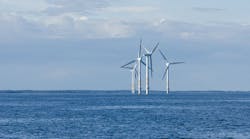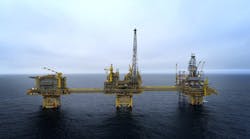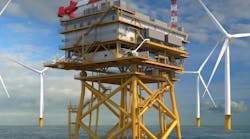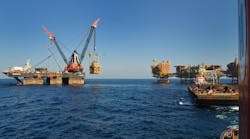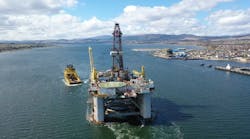Offshore staff
NEW ORLEANS – Failure of the blind shear rams (BSRs) to close and seal the well because of drill pipe trapped between the blocks has been given by Det Norske Veritas (DNV) as the primary cause of the Macondo oil spill in the Gulf of Mexico.
The findings were included in the report “Forensic Examination of Deepwater Horizon Blowout Preventer,” a 551-page document which DNV recently released to the US Department of the Interior.
DNV says that the failure cause analysis was organized and conducted around a single top event. For the purposes of this investigation, the top event was defined as the failure of the BSRs to close and seal the well.
According to the report, the primary cause of failure was identified as the BSRs failing to fully close and seal due to a portion of drill pipe trapped between the blocks.
The report also ascribed contributing causes to the primary cause. These included:
• The BSRs were not able to move the entire pipe cross section into the shearing surfaces of the blades
• Drill pipe in process of shearing was deformed outside the shearing blade surfaces
• The drill pipe elastically buckled within the wellbore due to forces induced on the drill pipe during loss of well control
• The position of the tool joint at or below the closed upper annular prevented upward movement of the drill pipe
• The upper variable bore rams (VBRs) were closed and sealed on the drill pipe
• The flow of well fluids was uncontrolled from downhole of the upper VBRs.
From examining the recovered subsea equipment, DNV found a drill pipe tool joint between the upper annular and the upper VBRs. With both the upper annular and upper VBRs closed on the drill pipe, flow forces from the well pushed the tool joint into the upper annual element which prevented further upward movement of the drill pipe, according to DNV.
Because it could not move, the report states, the drill pipe buckled between the upper annual and upper VBRs. The drill pipe deflected until it contacted the wellbore just above the BSRs, DNV said.
Further, DNV found that the drill pipe between the shearing surfaces of the BSR was off center, so a portion of that pipe was outside the BSR blocks. When the rams closed, that part of the pipe was trapped between the ram block faces to prevent them from closing fully.
In this partially open condition, flow continued through the drill pipe trapped between the ram block faces and then through the gap between the ram blocks.
The first part of the two-volume study can be found online at http://www.deepwaterinvestigation.com/external/content/document/3043/1047291/1/DNV%20Report%20EP030842%20for%20BOEMRE%20Volume%20I.pdf.
03/24/2011
